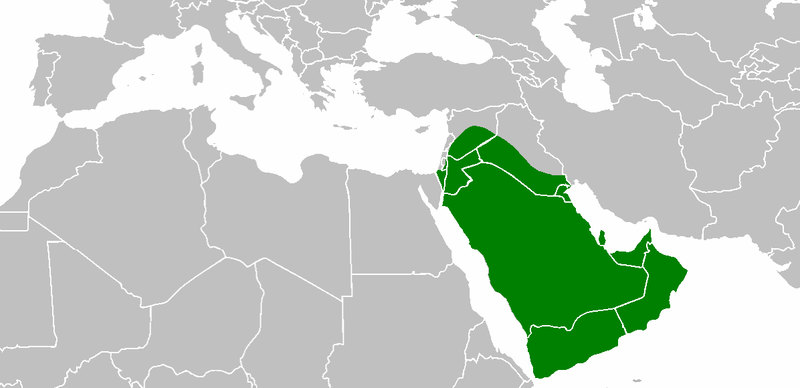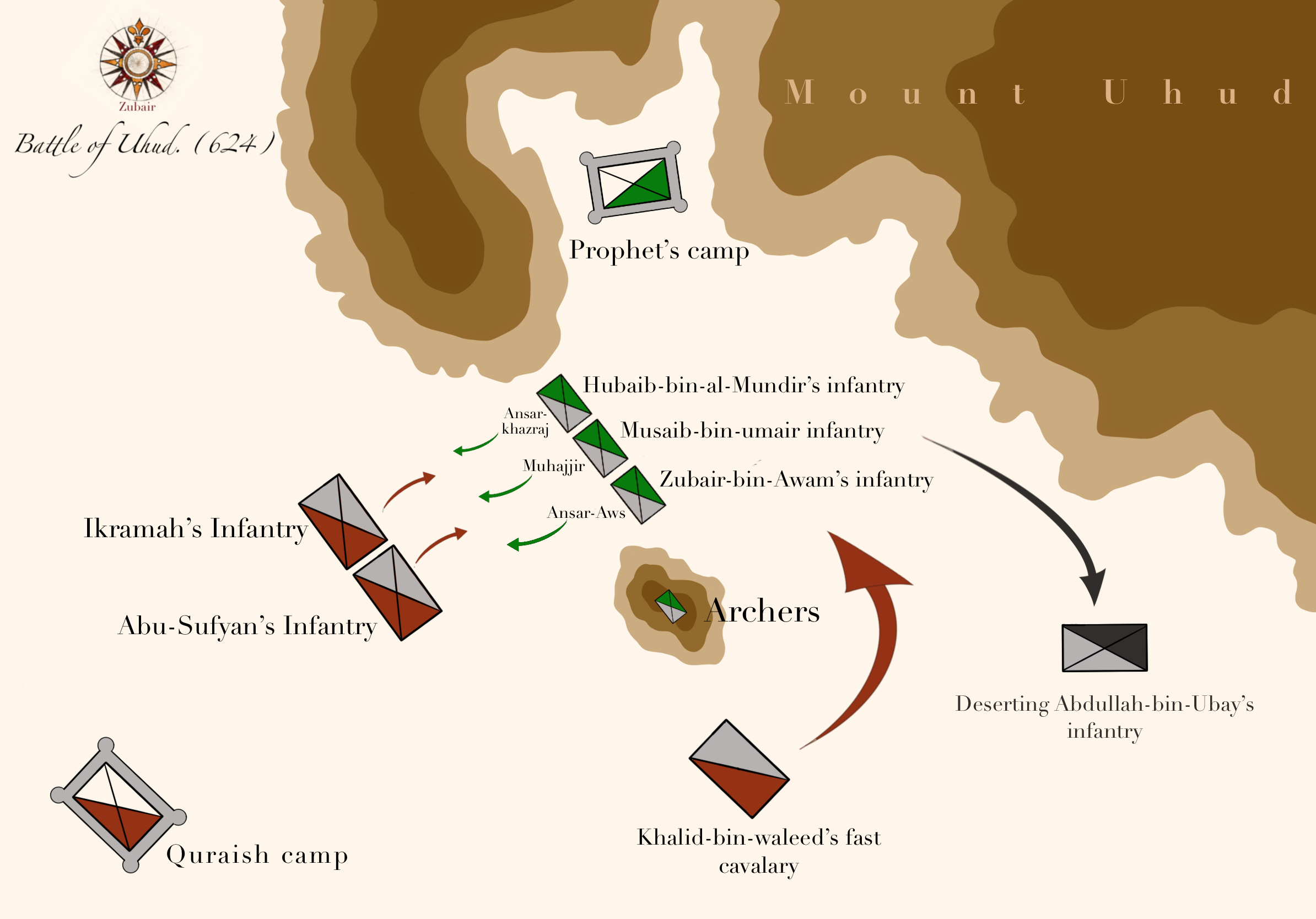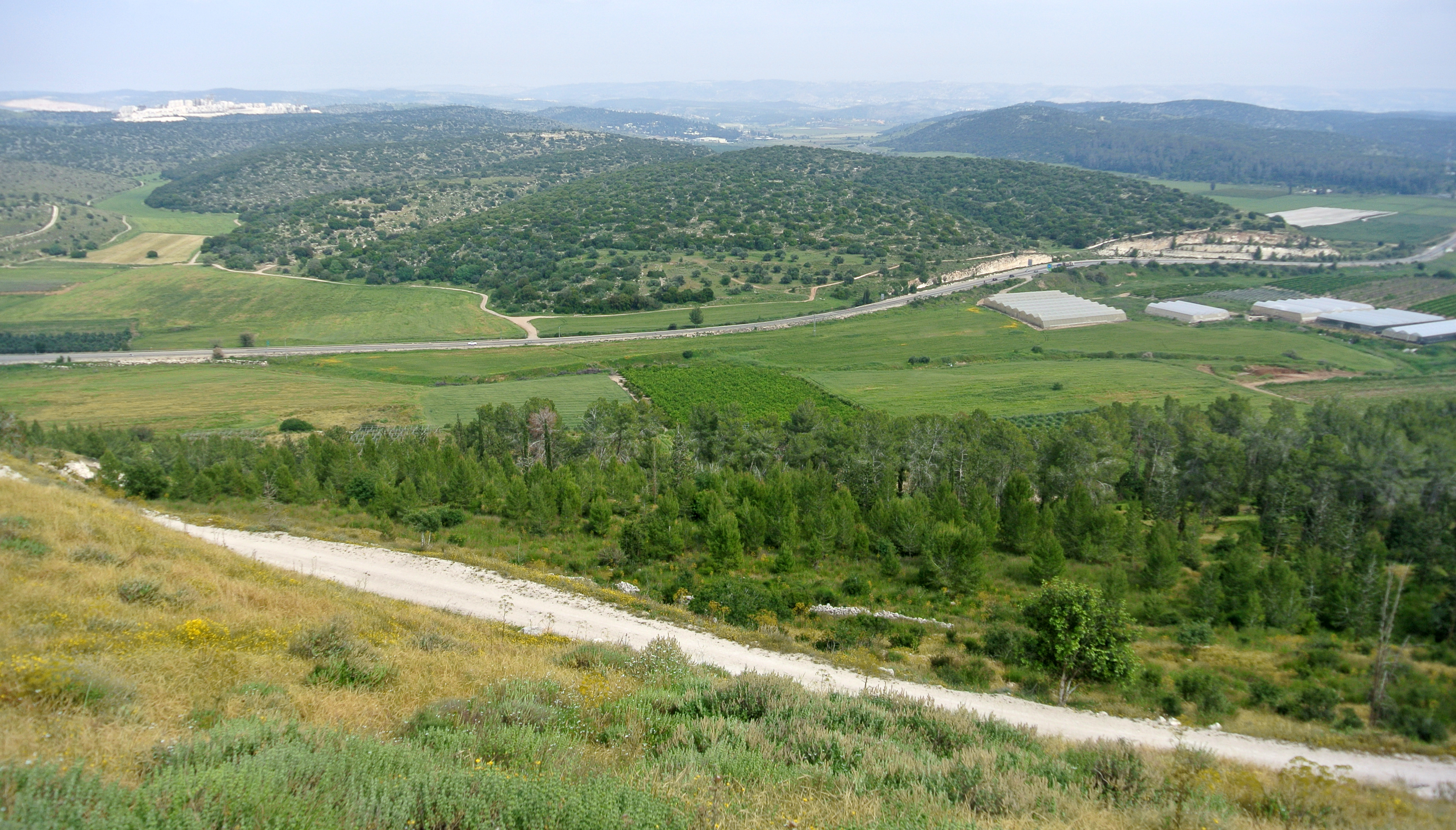|
Battle Of Bosra
The Battle of Bosra was fought in 634 CE between the Rashidun Caliphate army and the Byzantine Empire over the possession of the city Bosra, in Syria. The city, which was then the capital of the Ghassanid Kingdom, which was itself a Byzantine vassal state, was one of the Islamic forces' first significant captures. The siege took place between the months of June and July in 634 CE. Background Caliph Abu Bakr sent his four corps under Amr ibn al-A'as, Abu Ubaidah ibn al-Jarrah, Shurahbil ibn Hasana, and Yazid ibn Abi Sufyan to capture different districts in Syria. The four were not very successful origionally as a result of the concentration of the Byzantine army's strength at Ajnadayn. Abu Bakr sent Khalid ibn Walid to Syria to take command of the Rashidun army there. Khalid ibn Walid reached Syria and captured several towns, after which he reached the city of Bosra in June of 634 CE. According to his instructions, Abu Ubaidah ibn al-Jarrah, who had already occupied the ... [...More Info...] [...Related Items...] OR: [Wikipedia] [Google] [Baidu] |
Arab–Byzantine Wars
The Arab–Byzantine wars were a series of wars between a number of Muslim Arab dynasties and the Byzantine Empire between the 7th and 11th centuries AD. Conflict started during the initial Muslim conquests, under the expansionist Rashidun and Umayyad caliphs, in the 7th century and continued by their successors until the mid-11th century. The emergence of Muslim Arabs from Arabia in the 630s resulted in the rapid loss of Byzantium's southern provinces ( Syria and Egypt) to the Arab Caliphate. Over the next fifty years, under the Umayyad caliphs, the Arabs would launch repeated raids into still-Byzantine Asia Minor, twice besiege the Byzantine capital of Constantinople, and conquer the Byzantine Exarchate of Africa. The situation did not stabilize until after the failure of the Second Arab Siege of Constantinople in 718, when the Taurus Mountains on the eastern rim of Asia Minor became established as the mutual, heavily fortified and largely depopulated frontier. Under the Ab ... [...More Info...] [...Related Items...] OR: [Wikipedia] [Google] [Baidu] |
Abu Bakr
Abu Bakr Abdallah ibn Uthman Abi Quhafa (; – 23 August 634) was the senior companion and was, through his daughter Aisha, a father-in-law of the Islamic prophet Muhammad, as well as the first caliph of Islam. He is known with the honorific title al-Siddiq by Sunni Muslims. Abu Bakr became one of the first converts to Islam and extensively contributed his wealth in support of Muhammad's work. He was among Muhammad's closest companions, accompanying him on his migration to Medina and being present at a number of his military conflicts, such as the battles of Badr and Uhud. Following Muhammad's death in 632, Abu Bakr succeeded the leadership of the Muslim community as the first Rashidun Caliph. During his reign, he overcame a number of uprisings, collectively known as the Ridda Wars, as a result of which he was able to consolidate and expand the rule of the Muslim state over the entire Arabian Peninsula. He also commanded the initial incursions into the neighbouring ... [...More Info...] [...Related Items...] OR: [Wikipedia] [Google] [Baidu] |
Muhammad
Muhammad ( ar, مُحَمَّد; 570 – 8 June 632 Common Era, CE) was an Arab religious, social, and political leader and the founder of Islam. According to Muhammad in Islam, Islamic doctrine, he was a prophet Divine inspiration, divinely inspired to preach and confirm the tawhid, monotheistic teachings of Adam in Islam, Adam, Abraham in Islam, Abraham, Moses in Islam, Moses, Jesus in Islam, Jesus, and other Prophets and messengers in Islam, prophets. He is believed to be the Seal of the Prophets within Islam. Muhammad united Arabian Peninsula, Arabia into a single Muslim polity, with the Quran as well as his teachings and practices forming the basis of Islamic religious belief. Muhammad was born approximately 570CE in Mecca. He was the son of Abdullah ibn Abd al-Muttalib and Amina bint Wahb. His father Abdullah was the son of Quraysh tribal leader Abd al-Muttalib ibn Hashim, and he died a few months before Muhammad's birth. His mother Amina died when he was six, lea ... [...More Info...] [...Related Items...] OR: [Wikipedia] [Google] [Baidu] |
The Caliph
A caliphate or khilāfah ( ar, خِلَافَة, ) is an institution or public office under the leadership of an Islamic steward with the title of caliph (; ar, خَلِيفَة , ), a person considered a political-religious successor to the Islamic prophet Muhammad and a leader of the entire Muslim world (ummah). Historically, the caliphates were polities based on Islam which developed into multi-ethnic trans-national empires. During the medieval period, three major caliphates succeeded each other: the Rashidun Caliphate (632–661), the Umayyad Caliphate (661–750), and the Abbasid Caliphate (750–1258). In the fourth major caliphate, the Ottoman Caliphate, the rulers of the Ottoman Empire claimed caliphal authority from 1517. Throughout the history of Islam, a few other Muslim states, almost all hereditary monarchies such as the Mamluk Sultanate (Cairo) and Ayyubid Caliphate, have claimed to be caliphates. The first caliphate, the Rashidun Caliphate, was established in ... [...More Info...] [...Related Items...] OR: [Wikipedia] [Google] [Baidu] |
Dhiraar Bin Al-Azwar
Diraar ibn al-Azwar(RA) ( ar, ضرار بن الأزور) also spelled as Diraar or Dhiraar (original name Diraar ibn Malik), was a skilled warrior since before the time of Islam who participated in the Early Muslim conquests and a companion of the Islamic prophet Muhammad. Dhiraar was known to his tribe as al-Azwar. Dhiraar was the brother of the renowned female warrior (Khawlah bint al-Azwa). Dhiraar was feared by the Byzantine army and was given the nickname ''The barechested Warrior'' or ''The barechested Champion'' for his tendency to fight without armor or upper garments. Diraar mostly known for killing three dozens enemy commanders and champions in the Battle of Ajnadayn, blocking the enemy retreat in the Battle of Yarmouk, and killing more than a hundred soldiers single handedly in the siege of Oxyrhynchus Bahnasa. Diraar was a member of the elite Rashidun cavalry unit and also a dueling specialist of the Rashidun Army operating mostly under the famous general Khalid ... [...More Info...] [...Related Items...] OR: [Wikipedia] [Google] [Baidu] |
Byzantine
The Byzantine Empire, also referred to as the Eastern Roman Empire or Byzantium, was the continuation of the Roman Empire primarily in its eastern provinces during Late Antiquity and the Middle Ages, when its capital city was Constantinople. It survived the fragmentation and fall of the Western Roman Empire in the 5th century AD and continued to exist for an additional thousand years until the fall of Constantinople to the Ottoman Empire in 1453. During most of its existence, the empire remained the most powerful economic, cultural, and military force in Europe. The terms "Byzantine Empire" and "Eastern Roman Empire" were coined after the end of the realm; its citizens continued to refer to their empire as the Roman Empire, and to themselves as Romans—a term which Greeks continued to use for themselves into Ottoman times. Although the Roman state continued and its traditions were maintained, modern historians prefer to differentiate the Byzantine Empire from Ancient Rome a ... [...More Info...] [...Related Items...] OR: [Wikipedia] [Google] [Baidu] |
Ghassanid
The Ghassanids ( ar, الغساسنة, translit=al-Ġasāsina, also Banu Ghassān (, romanized as: ), also called the Jafnids, were an Arab tribe which founded a kingdom. They emigrated from southern Arabia in the early 3rd century to the Levant region. Some merged with Hellenized Christian communities, converting to Christianity in the first few centuries AD, while others may have already been Christians before emigrating north to escape religious persecution. After settling in the Levant, the Ghassanids became a client state to the Byzantine Empire and fought alongside them against the Persian Sassanids and their Arab vassals, the Lakhmids. The lands of the Ghassanids also acted as a buffer zone protecting lands that had been annexed by the Romans against raids by Bedouin tribes. Few Ghassanids became Muslim following the Muslim conquest of the Levant; most Ghassanids remained Christian and joined Melkite and Syriac communities within what is now Jordan, Israel, Palestine, ... [...More Info...] [...Related Items...] OR: [Wikipedia] [Google] [Baidu] |
Yarmouk River
The Yarmuk River ( ar, نهر اليرموك, translit=Nahr al-Yarmūk, ; Greek: Ἱερομύκης, ; la, Hieromyces or ''Heromicas''; sometimes spelled Yarmouk), is the largest tributary of the Jordan River. It runs in Jordan, Syria and Israel, and drains much of the Hauran plateau. Its main tributaries are the wadis of 'Allan and Ruqqad from the north, Ehreir and Zeizun from the east. Although it is narrow and shallow throughout its course, at its mouth it is nearly as wide as the Jordan, measuring thirty feet in breadth and five in depth. The once celebrated Matthew Bridge used to cross the Yarmuk at its confluence with the Jordan. History Yarmuk forms a natural border between the plains to the north - Hauran, Bashan and Golan - and the Gilead mountains to the south. Thus it has often served as boundary line between political entities. Neolithic The Yarmukian is a Pottery Neolithic culture that inhabited parts of Palestine and Jordan. Its type site is at Sha'ar HaGolan, on ... [...More Info...] [...Related Items...] OR: [Wikipedia] [Google] [Baidu] |
Hauran
The Hauran ( ar, حَوْرَان, ''Ḥawrān''; also spelled ''Hawran'' or ''Houran'') is a region that spans parts of southern Syria and northern Jordan. It is bound in the north by the Ghouta oasis, eastwards by the al-Safa (Syria), al-Safa field, to the south by Jordan's desert steppe and to the west by the Golan Heights. Traditionally, the Hauran consists of three subregions: the Nuqrah and Jaydur plains, the Jabal al-Druze massif, and the Lajat volcanic field. The population of the Hauran is largely Arab, but religiously heterogeneous; most inhabitants of the plains are Sunni Muslims belonging to large agrarian clans, while Druze form the majority in the eponymous Jabal al-Druze and a significant Greek Orthodox Church, Greek Orthodox and Melkite Greek Catholic Church, Greek Catholic minority inhabit the western foothills of Jabal al-Druze. The region's largest towns are Daraa, Ar Ramtha, al-Ramtha and al-Suwayda. From the mid-1st century BCE, the region was governed by the ... [...More Info...] [...Related Items...] OR: [Wikipedia] [Google] [Baidu] |
Khalid Ibn Walid
Khalid ibn al-Walid ibn al-Mughira al-Makhzumi (; died 642) was a 7th-century Arab military commander. He initially headed campaigns against Muhammad on behalf of the Quraysh. He later became a Muslim and spent the remainder of his career in service to Muhammad and the first two Rashidun successors: Abu Bakr and Umar. Following the establishment of the Rashidun Caliphate, Khalid held a senior command in the Rashidun army; he played the leading role in the Ridda Wars against rebel tribes in Arabia in 632–633, the initial campaigns in Sasanian Iraq in 633–634, and the conquest of Byzantine Syria in 634–638. As a horseman of the Quraysh's aristocratic Banu Makhzum, which ardently opposed Muhammad, Khalid played an instrumental role in defeating Muhammad and his followers during the Battle of Uhud in 625. In 627 or 629, he converted to Islam in the presence of Muhammad, who inducted him as an official military commander among the Muslims and gave him the title of () ... [...More Info...] [...Related Items...] OR: [Wikipedia] [Google] [Baidu] |
Valley Of Elah
The Valley of Elah or Ella Valley ("the valley of the terebinth"; from the he, עמק האלה ''Emek HaElah''), called in ar, وادي السنط, Wadi es-Sunt, is a long, shallow valley in Israel and the West Bank best known as the place described in the Hebrew Bible (or Old Testament of Christianity) where the Israelites were encamped when David fought Goliath (; ). It is home to several important archaeological sites, including those identified as the ancient towns of Azekah and Socho (). Rising up from the valley on its extreme southeast end lies the hilltop ruin Adullam, and on its north lie the ruins of the ancient fortress city of Khirbet Qeiyafa, which is identified with the ancient town of Sha'araim (). The valley is named after the large and shady terebinth trees (''Pistacia atlantica'') which are indigenous to it. On the west side of the valley, near Socho, there is a very large and ancient tree of this kind, in height with a trunk in circumference and a canopy at ... [...More Info...] [...Related Items...] OR: [Wikipedia] [Google] [Baidu] |
Yazid Ibn Abi Sufyan
Yazid ibn Abi Sufyan ibn Harb ibn Umayya ( ar, يزيد بن أبي سفيان بن حرب بن أمية, Yazīd ibn Abī Sufyān ibn Ḥarb ibn Umayya; died 639) was a leading Arab Muslim commander in the conquest of Syria from 634 until his death in the plague of Amwas in 639. Following the capture of Damascus around 635, he was placed in command of the city and its military district. After the death of the overall Muslim commander of Syria, Abu Ubayda ibn al-Jarrah, in 639, he was appointed by Caliph Umar () the governor of Damascus, Jordan and Palestine. Yazid was the elder half-brother of Mu'awiya ibn Abi Sufyan, who was appointed as his successor over Damascus and Jordan by Umar and gradually became governor over all of Syria. In 661 he became caliph and founded the Syria-based Umayyad dynasty. Early life Yazid was a son of Abu Sufyan, a chief of the Quraysh tribe of Mecca, belonging to the Umayya branch of its Banu Abd Shams clan. His mother was Zaynab bint Nawfal (al ... [...More Info...] [...Related Items...] OR: [Wikipedia] [Google] [Baidu] |






